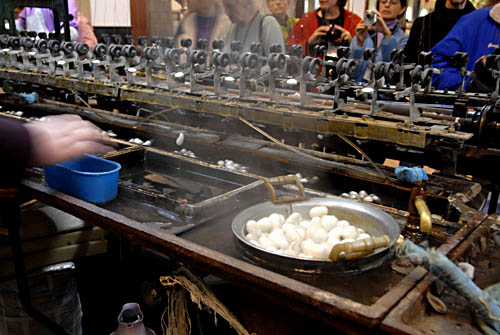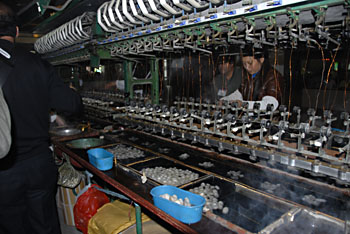Day 6, Tuesday morning continued

Silk Factory, Suzhou
 Photo by Lucie Field
Photo by Lucie Field
|
Day 6, Tuesday morning continued |
|
 Photo by Gene Field
Photo by Gene Field
|
After visiting the Lingering Garden, we got back on the bus and headed for a silk factory. Suzhou is famous for its silk and we visited the Silk Institute. We were told this was the largest silk factory in China. However, there appear to be several very large silk factories. This one seemed to be more of a tourist operation with several floors - two for shopping and a restaurant on the top floor. The ground floor had the "factory" where we were shown how the silk was spun or handled.
| |
|
Photo by Lucie Field
|
||

Photo by Lucie Field |
After trying our hand at stretching the silk, we then went into a salesroom where there were all sizes of quilts, packaged and ready to go. Then there was a multitude of comforter covers to choose from: silk or cotton, plain or print, and many colors. I think everyone bought at least one comforter and cover, some bought more. They were then compacted in a press and strapped for easy carrying. This made it possible for us later to put them in a suitcase. |

| 27 May 2006 | [China Trip index |next] |